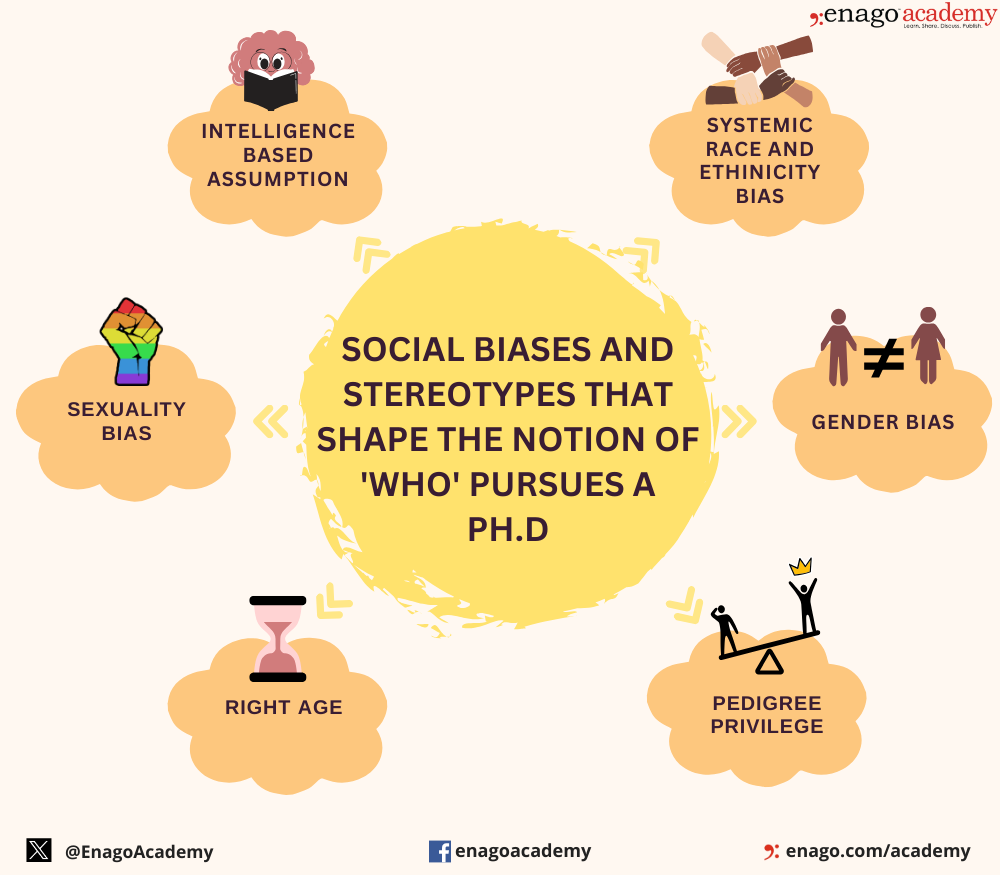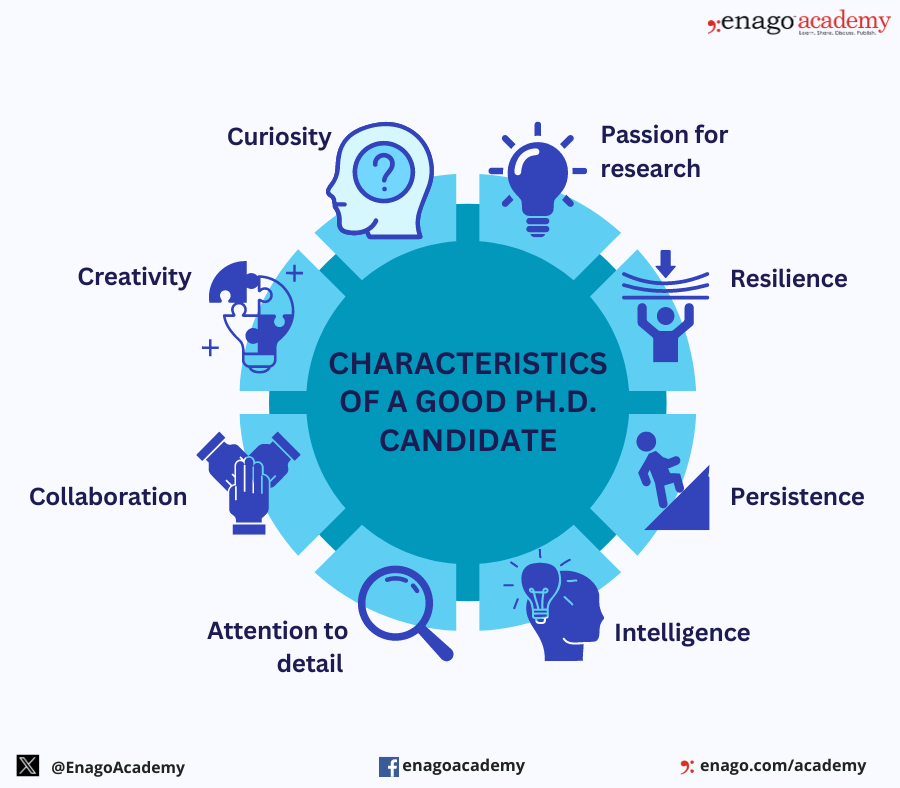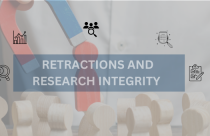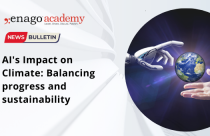Addressing Barriers in Academia: Navigating unconscious biases in the Ph.D. journey

In the journey of academia, a Ph.D. marks a transitional phase, like that of a caterpillar transforming into a butterfly. Within the cocoon of academia, a student undergoes metamorphosis, transitioning from a learner to a researcher. But this path, as single-faceted and whimsical as it may seem in theory, is not so in reality. The decision to pursue further studies comes with its own set of challenges, including certain preconceived conditions. These conditions are based on society’s perception and biases, which act as invisible barriers, narrowing the corridors of academia. Such conditions often discourage individuals who deviate from the perceived ‘ideal candidate’ mold from pursuing a Ph.D.
Biases are unconscious beliefs about specific groups that enable swift but inaccurate processing of information. They when translated into actions can result in discrimination. Here are some major social biases that influence and often limit the diversity of candidates that may pursue a doctoral degree:
 Navigating through these biases is imperative for creating an inclusive academic environment that not only acknowledges, but also celebrates the diverse backgrounds and experiences that scholars bring to the pursuit of knowledge. For this, let’s try and understand what constitutes each of these conditions and what is its current landscape.
Navigating through these biases is imperative for creating an inclusive academic environment that not only acknowledges, but also celebrates the diverse backgrounds and experiences that scholars bring to the pursuit of knowledge. For this, let’s try and understand what constitutes each of these conditions and what is its current landscape.
Confronting the Bias of High IQ in Ph.D. Journey
The most prevalent assumption about a Ph.D. is that it requires exceptional intelligence, but emerging evidence challenges the notion that success at the doctoral level depends only on conventional measures of intelligence quotient (IQ). The reality paints a more diverse picture of the qualities required to pursue this degree.
With Ph.D. candidates coming forth and sharing their experiences, it has become clear that grades, often considered as the measure of intelligence, do not govern the success during the Ph.D. Although this path requires certain level of intellect, there is more to the list. Beyond the limits of known, it is curiosity and determination that will propel you forward in unknown terrains. Scholarly pursuit is a research journey and not an intelligence test. It is more about the motivation to keep pushing through the challenges than the narrow definition of ‘smartness’. A nuanced mix of characteristics ensures a steady pace in academic exploration and helps to bridge the gap between theory and practical.

Traditionally, IQ was understood synonymous to cognitive abilities, but further research has revealed diverse range of intelligences as proposed by Howard Gardner in his theory of Multiple Intelligences.
According to him, intelligence is not a unit entity but encompasses various distinct types. Logical-mathematical intelligence, linguistic intelligence, visual-spatial intelligence, bodily-kinesthetic intelligence, musical intelligence, interpersonal intelligence, intrapersonal intelligence, naturalistic intelligence, and even existential intelligence all contribute to an individual’s cognitive capabilities. Standardizing only one form of intellect compromises the richness and diversity that human brain offers. Even with criticism that this theory received, it still supplements a more nuanced understanding of the term IQ.
Ph.D. candidates can benefit from a wide range of cognitive strengths, which the theory of multiple intelligences supports. Thus, the rigid association between high IQ and Ph.D. success that harbors in the minds of many needs re-evaluation.
Addressing “Pedigree” Privilege in the Ph.D. Journey
In Academia, there is an ingrained bias associated with socioeconomic status that leads to instances of selection based on pedigree. This perpetuates inequality and restricts opportunities for students from non-elite background. In past, lack of being from a prestigious university has worked against the of applicants from lower-ranked institutions. The prevailing belief contributing to such bias is the notion that attending an elite university represents intelligence. Moreover, family socio-economic status significantly influences educational outcomes, acting as a gateway to essential resources. Narrow definitions of merit rooted in early life advantages, perpetuates social and cultural capital imbalances. A study revealed that in USA, nearly 20% of professors come from eight prestigious universities (Berkeley, Harvard, Stanford, Michigan, etc.).
A report based on a survey conducted in 2019, revealed that 27% of doctoral students in the USA identify as first-generation researchers, with varying degree of individuals from different ethnicity, indicating the movement of science away from cultural capital bias.
Prevalence of Gender Bias in Academia
Gender bias in academia is prevalent and evident at various career stages. It acts as glass ceiling that limits the progression of women despite equal representation at earlier stages. Statistics from the National Institutes of Health (NIH) expose significant disparities, with only 1 out of 16 NIH directors being a woman, and them holding only 20-26% of tenured positions in the top 10 US research institutes. Similar trend is observed in the Europe, where in Netherlands despite 44% of Ph.D.’s being awarded to women in 2018 in the Netherlands, only 22% of the tenured faculty were women. Gender based disparity is further accelerated due to societal prejudices and expectations.
Gender biases in academia is amplified by factors like the underrepresentation of women in leadership, the gender pay gap, and implicit biases. If a university displays bias against women during hiring, even in subtle ways, it sets off a cascade effect. Rejected applicants, irrespective of gender, may end up at less prestigious institutions. When researchers from all institutions apply for external funding, there may be no direct gender bias observed, but the funding decisions will be swayed by the institution’s prestige.
Although funding decisions themselves may not show explicit gender bias, but still women indirectly bear the consequences of the initial bias in hiring at prestigious institutions. Thus, resulting in a funding disparity as a higher percentage of qualified researchers from the prestigious institution, where men were disproportionately hired, receive funding compared to those from less prestigious institutions.
Efforts are being taken globally and locally to counter gender bias through various initiatives, implementation of inclusive language policies, training for faculty and staff, etc. Women should actively pursue Ph.D. programs to challenge ingrained biases in academia, contributing to a more diverse and inclusive scholarly community. By increasing their presence in research and pursuing advanced degrees, women play a crucial role in breaking the cycle of gender bias, fostering equal opportunities, and dismantling the barriers that hinder their advancement.
Challenging the Myth of “Right Age” for Ph.D.
The question of the “right age” often surfaces, when one thinks about entering the doctorate world. People around you will prompt lots of concerns about timing and potential limitations. Embarking on a Ph.D. journey at an early age, directly after undergraduate studies, is a common practice. However, it’s crucial to recognize that age should not be a primary worry when deciding on this commitment. Practically there is no perfect age for a Ph.D. Starting ‘early’ or ‘late’, both offer a perspective that benefits you throughout the journey. Maturity and life stability gained with age can contribute positively to the pursuit of a doctorate. The average age for completing the Ph.D. is approximately 31.5 years, showcasing the flexibility of the academic path.
For those contemplating about the timing of their scholarly pursuit, it’s never too late to embark on this path. The quintessential aspect of this journey lies in a commitment to your subject. Mature students often thrive in academia, driven by a genuine passion for their research.
The ideal age for pursuing a doctoral degree remains subjective, depending on individual circumstances, career goals, and personal motivations. While some find an early start advantageous, others may discover their passion for research later in life. The decision to pursue a Ph.D. is a personal one, and there’s no universal answer to the question of the “right age.”
Unveiling the Systemic Bias Against BAME Students in Academia
Science however objective, has still fallen to the traps of social biases. It is essential to address the systemic race and ethnicity-based biases that Black, Asian, and minority ethnic (BAME) students encounter in STEM fields. A recent analysis reveals following points that sheds light on the wide disparities faced by Black and Hispanic doctorate students in U.S.:
- Black (comprising 12% of the U.S. population) received only 5% of STEM Ph.D.’s awarded in 2021.
- Hispanics (constituting 19% of the population) received only 8% STEM Ph.D.’s in 2021.
- Almost half of Black Ph.D.’s and 24% of Hispanic Ph.D.’s borrowed over $50,000 for their graduate education. In contrast, only 15% of white borrowed similar amounts.
- Black and Hispanic students disproportionately earn their Ph.D.’s from institutions less likely to have paid research opportunities and teaching assistantships.
Disparities in parental education, occupation, and household resources, negatively affect BAME students, particularly in science subjects. Immigrant students have to face complex issues compared to the native class, which includes social isolation, prejudice, discrimination taking a toll on their mental health. Due to internalized racism in many instances, the reason for disparity that the BAME students face is attributed to their individual failure rather than to the systemic.
While provisions for diverse societies exists, there is a lack of its implementation at the ground level. Hence, there is an urgent need to dismantle the rooted cycle of disparity against BAME researchers and to foster an environment where diversity is not only acknowledged but also celebrated.
Struggles Faced by LGBTQIA+ Academics in STEM
The experiences of lesbian, gay, bisexual, and transgender (LGBT+) individuals within Science, Technology, Engineering, and Mathematics (STEM) remain underexplored, as they often face exclusion and discrimination. One of the most prominent struggle that Ph.D. students in STEM face is navigating visibility as it poses threats and potential setbacks in the academic career. Institutions should actively address LGBT+ visibility, empowering individuals to choose whether they want to make it known to others or not.
Despite efforts taken in the past to improve the experiences of LGBT+ individuals in STEM, the results are poor. This is because the efforts were more centered on promoting the visibility rather than addressing systemic causes of bias and discrimination. Structural disadvantages and discriminations faced by LGBT+ staff and students are deemed invisible due to both heteronormative practices. A 2019 report highlights that a significant percentage of LGBTQIA+ individuals contemplate leaving their workplaces due to discrimination.
To address these challenges institutes can adopt intersectional approaches to actively promote diversity, addressing the intersecting systems of oppression and privilege. They can move beyond symbolic gestures and implement initiatives that tackle systemic inequalities within STEM cultures. And lastly, try and understand more about the experience LGBT + individuals in STEM.
A Call to Counter STEM Biases and Cultivate Inclusivity
To counter all these biases that exists in STEM and the journey of Ph.D., a proactive approach is essential. There is an impertinent need for funding, mentorship programs, and inclusive initiatives. Supporting disadvantaged communities through ally ship and advocating for their betterment in academics can lead to dismantling systemic biases, fostering a diverse and equitable landscape in science, technology, engineering, and mathematics.
Have you ever faced systemic bias in your academic journey? Share your experience by joining the conversation on our Open Platform or participating in our podcast. Amplify your voice and contribute to a dialogue that fosters awareness and inspires positive change in academia for a more inclusive academic community.









